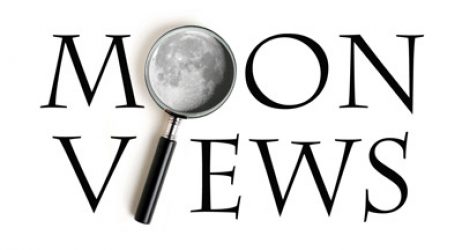



Official website of the Lunar Orbiter Image Recovery Project (LOIRP)

Larger image
“Photographed on 08/01/66. — Lunar Orbiter press conference at the Jet Propulsion Laboratory. A mockup of the solar-powered spacecraft (called the “Two-Eyed Robot”) is shown on the right.”

NASA Caption: “Lunar Orbiter press conference at the Jet Propulsion Laboratory. A mockup of the solar-powered spacecraft (called the “Two-Eyed Robot”) is shown on the right. It was built by Boeing for the NASA Langley Research Center. From Edgar M. Cortright, “Scouting the Moon” in Apollo Expeditions to the Moon: “It was in its photo system that Orbiter was most unconventional. Other spacecraft took TV images and sent them back to Earth as electrical signals. Orbiter took photographs, developed them on board, and then scanned them with a special photoelectric system–a method that, for all its complications and limitations, could produce images of exceptional quality. One Orbiter camera could resolve details as small as 3 feet from an altitude of 30 nautical miles. A sample complication exacted by this performance: because slow film had to be used (because of risk of radiation fogging), slow shutter speeds were also needed. This meant that, to prevent blurring from spacecraft motion, a velocity-height sensor had to insure that the film was moved a tiny, precise, and compensatory amount during the instant of exposure.” Published in Edgar M. Cortright, “Scouting the Moon, ” in Apollo Expeditions to the Moon, ed. Edgar M. Cortright, (Washington: NASA SP-350, 1975), p. 93.” Larger image

Larger image

Larger image
A camera-carrying and solar panels as it settled during a simulated photographic mission to the moon. The chamber will have a vacuum equivalent to about 100 miles altitude during the program. This is the first ground-test Lunar Orbiter to undergo a mission simulation under space-environment conditions. Boeing is building eight Lunar Orbiters for the National Aeronautics and pace Administration. The first launch is scheduled for mid-year.
 The Lunar Orbiter 3 was a spacecraft launched by NASA in 1967, designed primarily to photograph areas of the lunar surface for confirmation of safe landing sites for the Surveyor and Apollo missions. It was also equipped to collect selenodetic, radiation intensity, and micrometeoroid impact data. The spacecraft was placed in a cislunar trajectory and injected into an elliptical near-equatorial lunar orbit on February 8 at 21:54 UT. The orbit was 210.2 by 1,801.9 kilometres (130.6 1,119.6 mi) with an inclination of 20.9 degrees and a period of 3 hours 25 minutes. After four days (25 orbits) of tracking the orbit was changed to 55 by 1,847 kilometres (34 1,148 mi). The spacecraft acquired photographic data from February 15 to February 23, 1967, and readout occurred through March 2, 1967.
The Lunar Orbiter 3 was a spacecraft launched by NASA in 1967, designed primarily to photograph areas of the lunar surface for confirmation of safe landing sites for the Surveyor and Apollo missions. It was also equipped to collect selenodetic, radiation intensity, and micrometeoroid impact data. The spacecraft was placed in a cislunar trajectory and injected into an elliptical near-equatorial lunar orbit on February 8 at 21:54 UT. The orbit was 210.2 by 1,801.9 kilometres (130.6 1,119.6 mi) with an inclination of 20.9 degrees and a period of 3 hours 25 minutes. After four days (25 orbits) of tracking the orbit was changed to 55 by 1,847 kilometres (34 1,148 mi). The spacecraft acquired photographic data from February 15 to February 23, 1967, and readout occurred through March 2, 1967.

Larger image
Representatives of NASA Langley and Boeing signed the Lunar Orbiter contract on 16 April 1964 and sent it to NASA headquarters for final review. Three weeks later, on 7 May, Administrator James E. Webb approved the $80-million incentives contract to build five Lunar Orbiter spacecraft. Published in James R. Hansen, Spaceflight Revolution: NASA Langley Research Center From Sputnik to Apollo, NASA SP-4308, p. 331.